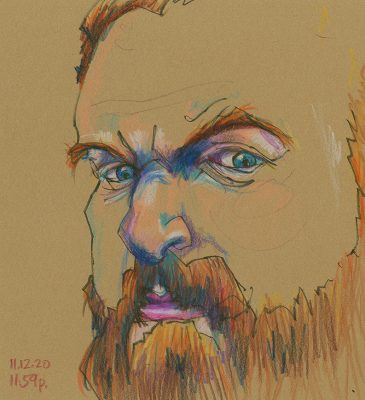
Recently a reader wrote in and asked if I had a list of my favorite “good, basic, drawing instruction books or websites.”
I thought I did have a list up of my favorite drawing books, but it seems I have a lot of single reviews. I decided to make a quick list here with my favorites.
Roz’s Favorite Drawing Books
All of the following have been mentioned on my blog at some point and many have their own dedicated review (use the search engine to locate it by author or title).
I don’t think I would call any of these “basic” drawing books. I don’t think about drawing books in terms of “basic.”
Instead I look at books which have a clear and thoughtful progression through the tools and methods covered. I look for books that provide a sound foundation. And I look for books that look at the components of art that matter most to me, like gesture, contour, negative space, value, color…
I favor books that address representational drawing. I’m really not interested in abstract drawing.
I also favor books that often grow out of the Atelier tradition. Here’s the list:
John Ruskin, Elements of Drawing
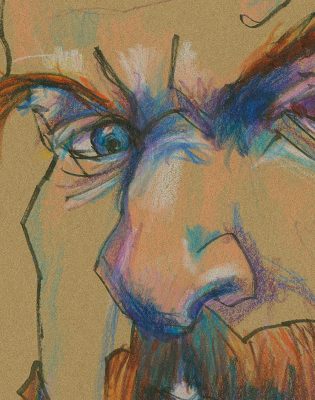
I’m a Ruskin fan to say the least. I can’t say enough about his book and what it has meant in my life. Not just in approaches to art but in also thinking about art. He is also a great bird and geology artist, funny how that influenced me. I’ve worn out several copies of his book since I was a child and one of my copies full of notes was stolen in my 20s (that person is going you know where).
Most “modern” how-to books spring from the DNA of Ruskin’s book. Some simply blatantly have ripped him off, and then been ripped off in turn, and well, Ruskin is everywhere and he gets the last laugh.
Cathy (Kate) Johnson, The Sierra Club Guide to Painting in Nature and The Sierra Club Guide to Sketching in Nature, revised edition
Kate is one of my living art heroes. I devoured her articles in “Artist Magazine” when I was in college. These two books are classics. (I can’t find my “Sketching” book so if you borrowed it please return it ASAP—I’m packing up and breaking up my library, but I am keeping these books.)
Through the wonder of the internet (sometimes there is still wonder involved) I actually started to correspond with Kate, and have even been fortunate to speak with her on the phone. I tear up in excitement and joy just thinking about it. The only thing that could make me happier is perhaps to meet Mark Twain.
Kate has written many books on art and one is Sketching and Drawing (First Steps Series), so perhaps if you’re looking for a basic book you might want to start there. But I think these two Sierra books are classics and should be a part of everyone’s drawing/painting library.
You can visit her at her website linked to her name in this section’s first paragraph. She has some DVD lessons which I think are downloadable now. I would check it out.
Betty Edwards, Drawing on the Right Side of the Brain
This book is probably the most basic and complex at the same time. If people only want to get one book which covers the basics and helps build a foundation I recommend this book. I’ve literally seen people I’ve recommended it to go from childish drawings to full realism in a couple of months, working on the lessons she presents.
There is a revised edition and I’m not sure what’s in that. I would research and buy the most recent edition you see has been published. It’s not that things have changed and the earlier books are obsolete—it’s that new sections have been added to the newer editions.
James Gurney (Dinotopia) and Thomas Kinkade (yep that Thomas Kinkade), The Artist’s Guide to Sketching
OK, this is going to hurt. I looked this book up on Amazon to get the full title. They list a used copy for $150.00.
This is a great book and perhaps someone will bring it out in a new edition.
Look for it in your library, or try to find a less expensive copy. (If you do, buy it. If I didn’t have a copy I’d pay $150 for it, but then I’m the person stuck now going through her library and trying to downsize, so I’m not a good role model. This book is staying on my shelf.)
It seems these two artists went on a road trip, or series of them; sketching as they went, and writing about how to draw. They are both so skilled at representational drawing that this book is a joy to look and fun to read. And they are insightful when writing about their process.
IMPORTANT UPDATE DECEMBER 2, 2020
On the date this post was published a reader wrote in to state that he had located a free download of this book by James Gurney on an website. The link was provided. Warning bells went off in my head. I checked the site, saw no indication authors were being paid for their work being made available on that site, and I contacted James Gurney. I received a note that this is in fact a pirated edition and the author has not been paid and they will work to have this removed. Please respect the rights of authors to create useful and even great works for us, and make a living from their work. Do not use disreputable sites which upload an author’s work without permission and/or renumeration.
I have removed the comment containing the link from this blog.
On the good news side of this event I was told that a new edition of that book is being planned. We can all look forward to that. Please support Gurney (who has produced so many great art-related books) by purchasing the new edition through regular channels when it is available.
Michael Mattesi, Force: Dynamic Life Drawing for Animators
Mattesi has written several Force books. I love them. If you are interested in gesture, movement, and animation you really need to read these books.
Andrew Loomis, Figure Drawing for All It’s Worth (and many other titles)
Loomis wrote his art instruction books in the first half of the 20th century. They still hold up. They cover everything from shading and gesture and perspective to…
They have been reissued in new editions so you shouldn’t have trouble finding them new or old.
Bert Dodson, Keys to Drawing
This is an excellent book that walks you through the fundamentals in a clear and approachable way, while not being simplistic. He also has a book on drawing from the imagination, but I like to draw from life, from what I’m looking at, so while that is also a good book it’s not my cup of tea.
Arthur L. Guptill, Rendering in Pen and Ink: The Classic Book on Pen and Ink Techniques for Artists, Illustrators, Architects, and Designers
The funny thing about Guptill is he wrote a lot of books (the pencil one is great too) and then those books went through lots of editions. I have about three editions of the “Color” book—the earliest of which has tipped in color plates—and I searched for it for four years. (Again, not a very good role model here.)
Guptill seems to have been a somewhat compulsive artist who loved to teach technique. His books are filled with diagrams and explanations. He, like Ruskin (in whose footsteps he followed) is much copied. He has the basics if that’s what you’re looking for. But then he expands and expands, with excellent examples.
His pen and ink book was first published in 1928. I found a copy in Australia as a child. The book never left my side until it was lost in a college move.
Atelier-type Books
There has been a proliferation of these recently. Mine are packed away so I can’t mentally separate which is which. I know I enjoyed reading the ones by Juliette Aristides. I would search online where you can look inside these books on Amazon or other vendor sites. See which appeal to you.
Online Classes
I don’t follow online classes since until recently I taught drawing online—people could just take mine.
Students keep mentioning Proko to me (and I think I have mentioned it to my students after I was made aware of it).
This artist has a ton of free tutorials. I watched a couple so I could comment to my students. I found them well done and very clearly presented. If he does that good a job on the free tutorials I would think the lessons he also sells would be good.
I recommend that if you’re looking for online classes you poke around and watch a few of his free tutorials and if you like them and there’s a paid class on a topic that suits you, within your budget, give it a go.
The thing with online classes is that not all of them are going to work for everyone. You’ll end up watching more than one.
If you join a site like Craftsy you can get a ton of courses for one subscription fee.
A number of years ago someone told me that Marc Taro Holmes had his urban sketching class on Craftsy and I went in and bought it (you could only buy individual classes at that time.) It’s not a basic class, which is what the reader asked about, but it is an excellent class. (I happen to like his book as well. Read a review of it by using my blog’s search engine.)
There are now so many drawing classes on Craftsy that for one low subscription price you can go from one to another. They might not be basic, or they might be too basic. But I think it’s probably a good deal over all.
Last spring I joined Craftsy on a subscription basis. A friend called to say they had a deal and they have bread baking classes by Peter Reinhart. Well I was SOOOOOO in.
I haven’t had a chance to look at any of the drawing classes, but I’ve watched a bunch of the bread classes and am anxious for the kitchen renovation to be completed so that I can have more counter space and move on to laminated doughs and macarons! That’s what I’m hoping to do in the new year. (Current subscription prices are $7.99 per month, or $79.99 per year and you essentially get 2 months free. I signed up when there was a $40 a year promo. But I’ve seen enough stuff on it that when my membership needs to be renewed I’ll do it. I’ll be ready to move on to Mexican Cooking with Rick Bayless and cake decorating!)
Fun Books You Need To Read
I’ll end on a totally fun note. There isn’t anything basic about these books, but they are my favorites in their categories of drawing from life, or animation. I’ve written about them on the blog and put the link to the reviews below:
Framed Ink for animators and anyone interested in sequential art.
At some point, if we have enough good karma, I believe we will all get to go to the Drawing Club.
In this blog post on Loosening Up I review Bill Buchman’s Expressive Figure Drawing, and Veronica Lawlor’s One Drawing a Day: A 6-Week Course Exploring Creativity with Illustration and Mixed Media. Lawlor is another one of my living art heroes. I had the great pleasure to meet her in 2018 and see her whip up a crowd of 300 or more people into making fantastic figure model sketches. Two friends told me they were going to a workshop with her this past May and then of course COVID happened and everything was cancelled. Keep a watch on this Life Drawing Symposium page if that interests you. (Melanie Reim, another excellent artist who works in a loose style also was one of the instructors for that; maybe it will be rescheduled.)
And I’m going to end with another fun book: Lynne Chapman’s Sketching People: An Urban Sketcher’s Manual to Drawing Figures and Faces. This artist sketches in color pencil with vibrant line and hatching. There is something joyful and charming about her realistic portraits. I’m happy whenever I see one. Her book is well-written and full of inspiration.



















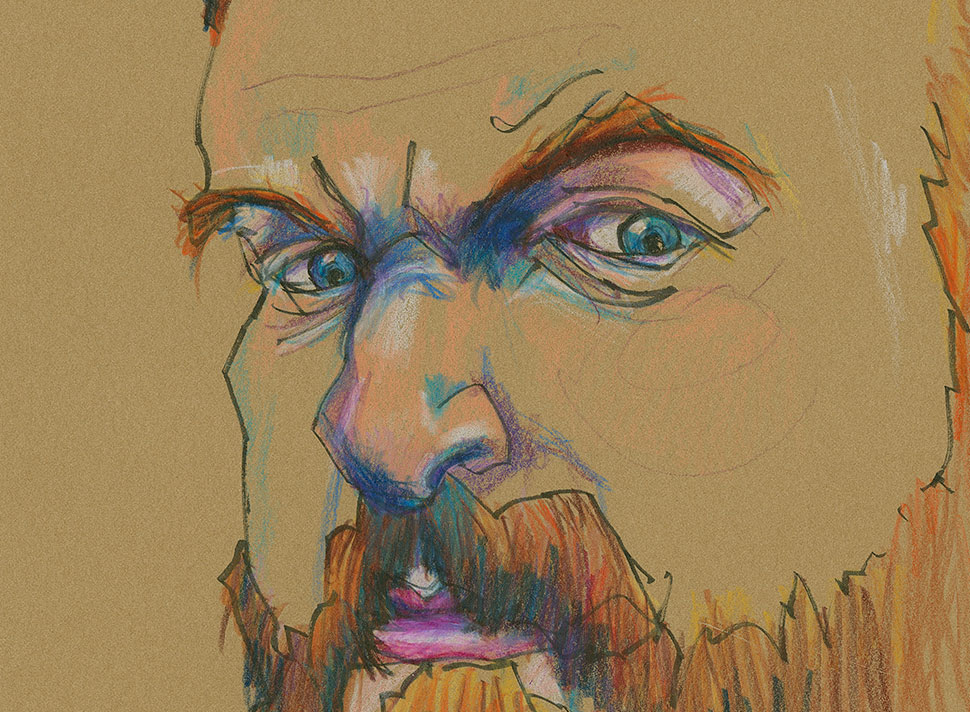
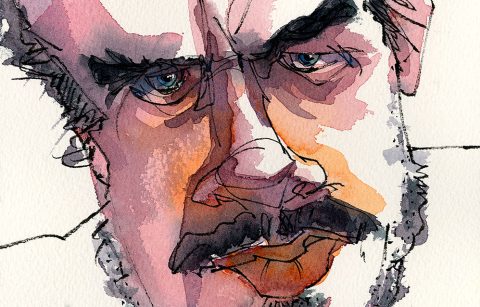
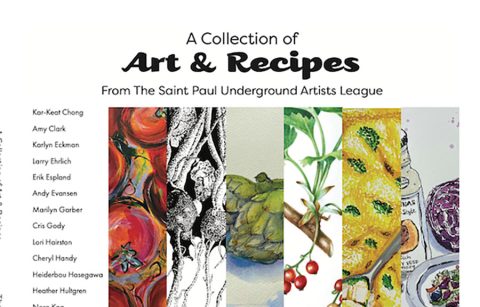
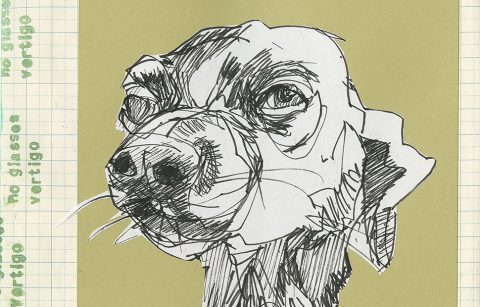
There is indeed wonder and magic on the internet — I met Kate (Cathy Johnson) in the same way after finding one of her Sierra books in the library and went on to regularly sketch with her in person over several years, before we moved to Texas. I miss her!
Your list is great, mentioning many books I’ve read (including the $150 book) and a few I now plan to look for. Thanks, Roz!
Vicky you are very fortunate indeed to have met Kate! I’m glad you’ve read the books on the list and enjoyed them.